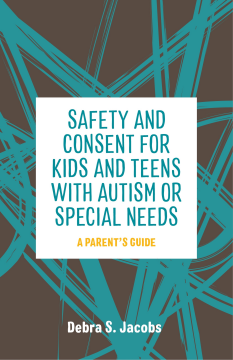
Additional Information
Book Details
Abstract
The developmental challenges of children with special needs means they are often more at risk of physical or emotional exploitation. This book provides invaluable tools to help parents, carers and teachers protect vulnerable children. Difficult topics are sensitively and straightforwardly addressed through step-by-step guidelines for parents and learning activities for children.
Guidance to carers includes information on how to identify warning signs of abuse, and recognise tell-tale behaviour changes in their child. Intervention activities help children learn which adults to trust and how to stay safe, while reducing the fear, shame or stigma surrounding abuse. Aimed at ages 5-12, these learning devices have been specifically designed to meet a range of comprehension and developmental abilities, with instructions for parents to adapt them to meet the specific needs of their child.
This important guidebook empowers adults to fulfil their responsibility to protect and support children, and to provide a safe environment in which every child can reach their highest potential free from coercion or abuse.
Table of Contents
| Section Title | Page | Action | Price |
|---|---|---|---|
| Safety and Consent for Kids and Teens with Autism or Special Needs | 3 | ||
| Contents | 7 | ||
| Acknowledgements | 9 | ||
| Notes on the text | 11 | ||
| Chapter 1 - Introduction | 13 | ||
| Preventing the molestation of children with special needs | 15 | ||
| Understanding friendship and acts of kindness | 17 | ||
| Behavioral signs of molestation/abuse | 20 | ||
| Be proactive | 29 | ||
| What to do if you suspect molestation/abuse | 37 | ||
| Use of this book | 40 | ||
| Chapter 2 - Friendship | 41 | ||
| What is friendship? | 41 | ||
| Learning social skills | 42 | ||
| Learning personal boundaries | 44 | ||
| Learning what to do when others are not acting as a friend | 49 | ||
| Good examples and positive environments | 51 | ||
| Learning about when and when not to keep secrets | 54 | ||
| Skills for making friends and being a friend | 56 | ||
| How to know if someone is or is not a friend | 66 | ||
| Chapter 3 - Healthy and Expected Behavior of Family and Friends | 73 | ||
| Providing care | 73 | ||
| Preventing molestation/abuse | 75 | ||
| Expected behavior at home | 93 | ||
| Expected behavior in public | 95 | ||
| Expected behavior in a medical setting | 98 | ||
| Expected behavior in general, across many settings | 99 | ||
| Different kinds of touch | 101 | ||
| Chapter 4 - Body Awareness and Life Skills | 103 | ||
| Learning opportunities | 103 | ||
| Understanding the difference between public and private activities | 104 | ||
| The concept of boundaries | 105 | ||
| Bathing protocols | 106 | ||
| Dressing protocols | 110 | ||
| Grooming protocols | 115 | ||
| Toilet-use protocols | 116 | ||
| Adolescence | 121 | ||
| Chapter 5 - Who to Tell and How to Tell | 129 | ||
| First steps | 129 | ||
| Getting help | 130 | ||
| The first visit to the advocacy center | 131 | ||
| After the examination | 136 | ||
| Legal action | 138 | ||
| Protective custody | 138 | ||
| Family | 139 | ||
| Chapter 6 - Personal Empowerment | 143 | ||
| Listening | 143 | ||
| Teaching empowerment | 145 | ||
| Assertiveness | 146 | ||
| Privacy and learning to say “No!” | 148 | ||
| Consistent modeling of appropriate behavior | 153 | ||
| Maintaining privacy and increasing personal power | 155 | ||
| Choices | 155 | ||
| Self-esteem and developing competence | 162 | ||
| Experiences to provide success | 167 | ||
| Encouraging independence enhances self-esteem | 171 | ||
| Creating experiences of success | 173 | ||
| A List of Alternative Pronunciations | 177 | ||
| Resources Guide | 181 | ||
| References and Further Reading | 185 | ||
| Index | 187 | ||
| Blank Page |
